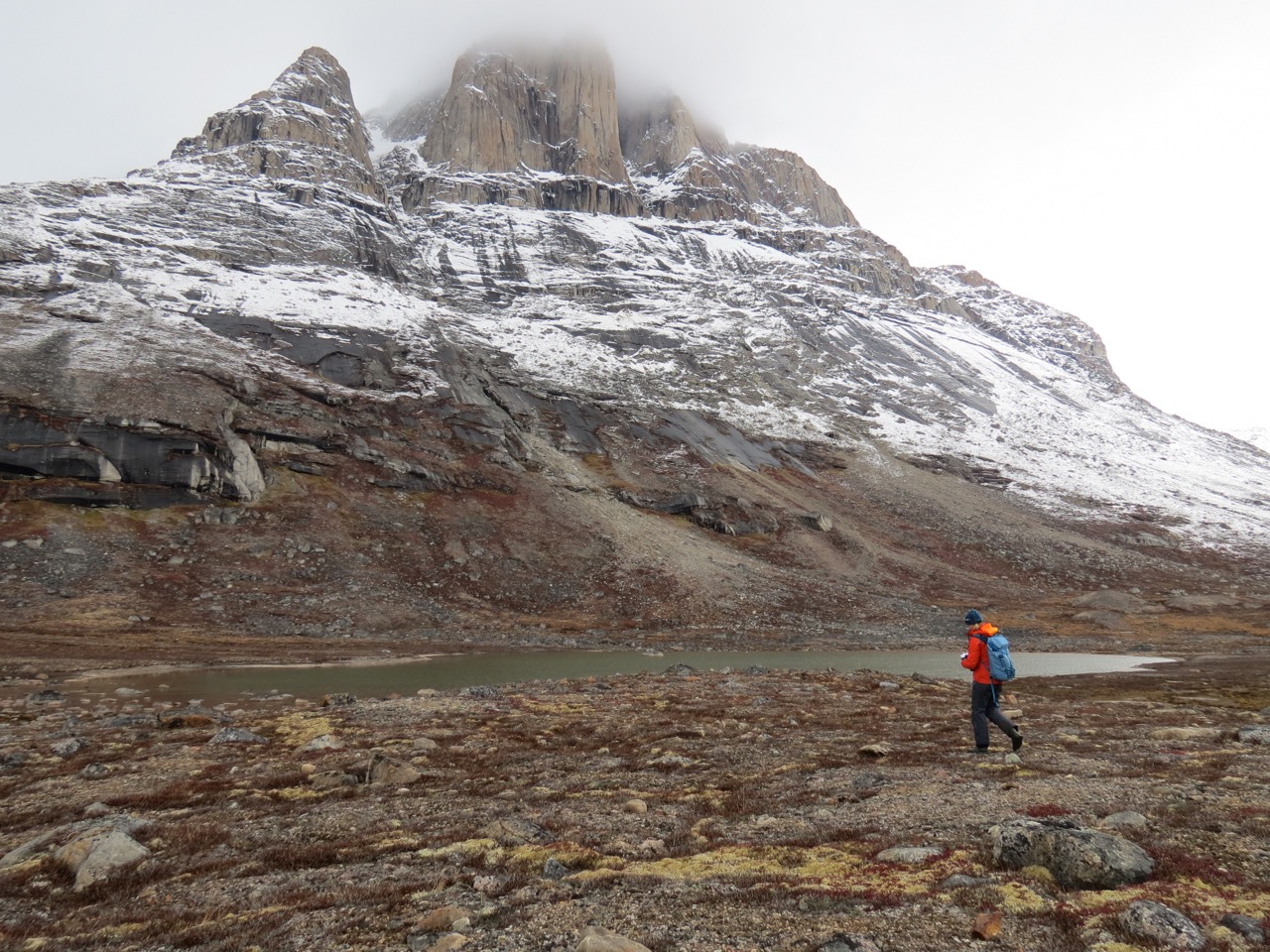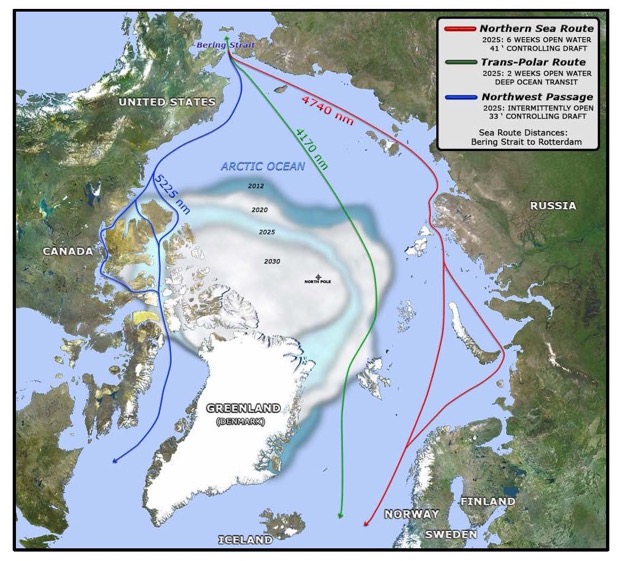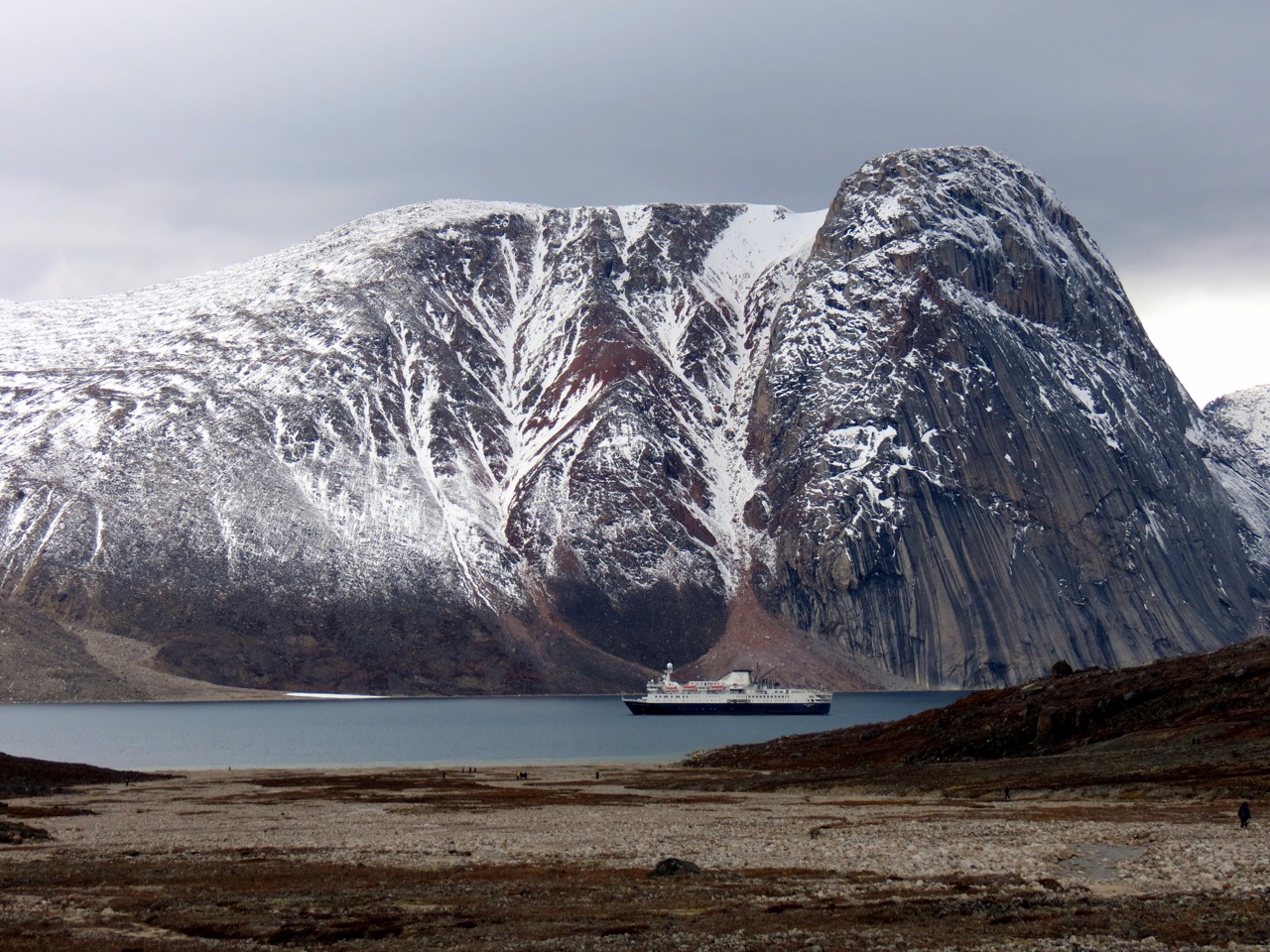Wrestling Visions of Climate Change in the Northwest Passage
Sailing Out of the Passage with Adventure Canada
Day 12: Aujuittuq National Park
Katabatic winds came roaring down off the mountains of the fjord. By some estimates, they were gusting up to 80 km, carrying higher-density air under the influence of gravity. Just before noon, the winds forced a brief closure of all decks for safety sake. But then, without explanation – though maybe we rounded a corner — the winds suddenly died to nothing. The whitecaps ceased frothing and, once again, all was right with the world. We were back out on deck, cruising along among spectacular mountain peaks. Afternoon would bring more adventure.
But first, early in the morning, Jackie Dawson gave a memorable presentation, arguing that the Canadian Arctic is not experiencing a shipping boom and won’t be doing so any time soon. Currently serving as Canada Research Chair at the University of Ottawa. Dawson has been examining Arctic shipping trends for more than ten years with as many as 15 graduate students at a time.
Dawson said climate change is causing reductions in sea ice. “We have 19 more days of open water in the Northwest Passage than we did ten years ago.” But the break-up of the ice-pack in the Arctic Ocean is pouring multi-year ice directly into the northern route of the Passage. “It could be 75 to 100 years before that ice pack is melted,” she said. “The northern route will be choked with ice for a long time.”
The Northwest Passage is nowhere near “open for business.” Canada has a long way to go to make the Arctic a viable region for ship traffic: “We don’t have the infrastructure.”
More ships are indeed sailing through the southern route of the Passage. But the traffic volumes in Arctic Canada remain tiny as compared with those of other regions, such as Svalbard, Greenland, and Franz Josef Land. ‘We don’t have a million vessels,” she said, “but the risks in Canada are much higher.” Ice and wind are among the greatest hazards for ship navigation, and while Canada has established corridors, most of its Arctic waters remain uncharted.
While climate change is reducing the amount of ice in the Canadian Arctic, other factors play a major role in any decision to ship goods through the Passage. The cost of insurance, for example, is currently creating a bottleneck. And the port and railroad facilities available via Prince Rupert, British Columbia, may well offer a cheaper alternative for decades.
But did I mention the afternoon? At Auyuittuq, we went ashore onto the mud flats of an alluvial plain that wound slowly uphill among striking mountain peaks. We went for various hikes – extreme, long, medium, short – and we wandered within a wide perimeter. Many passengers went for a half-hour zodiac cruise, and were surprised to see the hotel manager, Eckhart, arrive in a white polar bear suit, along with two assistants. They brought hot chocolate and Bailey’s, and most of us managed to choke it down.
Come evening, host David Newland built on the presentation of Jackie Dawson by showing everyone an especially cogent table demonstrating that the American Navy believes in climate change. The table predicts that by 2025, a viable passage will cross the Arctic region from east to west– but it won’t be the Northwest Passage. Rather, climate change will open a route almost directly across the North Pole.
[Pix by Sheena Fraser McGoogan]


